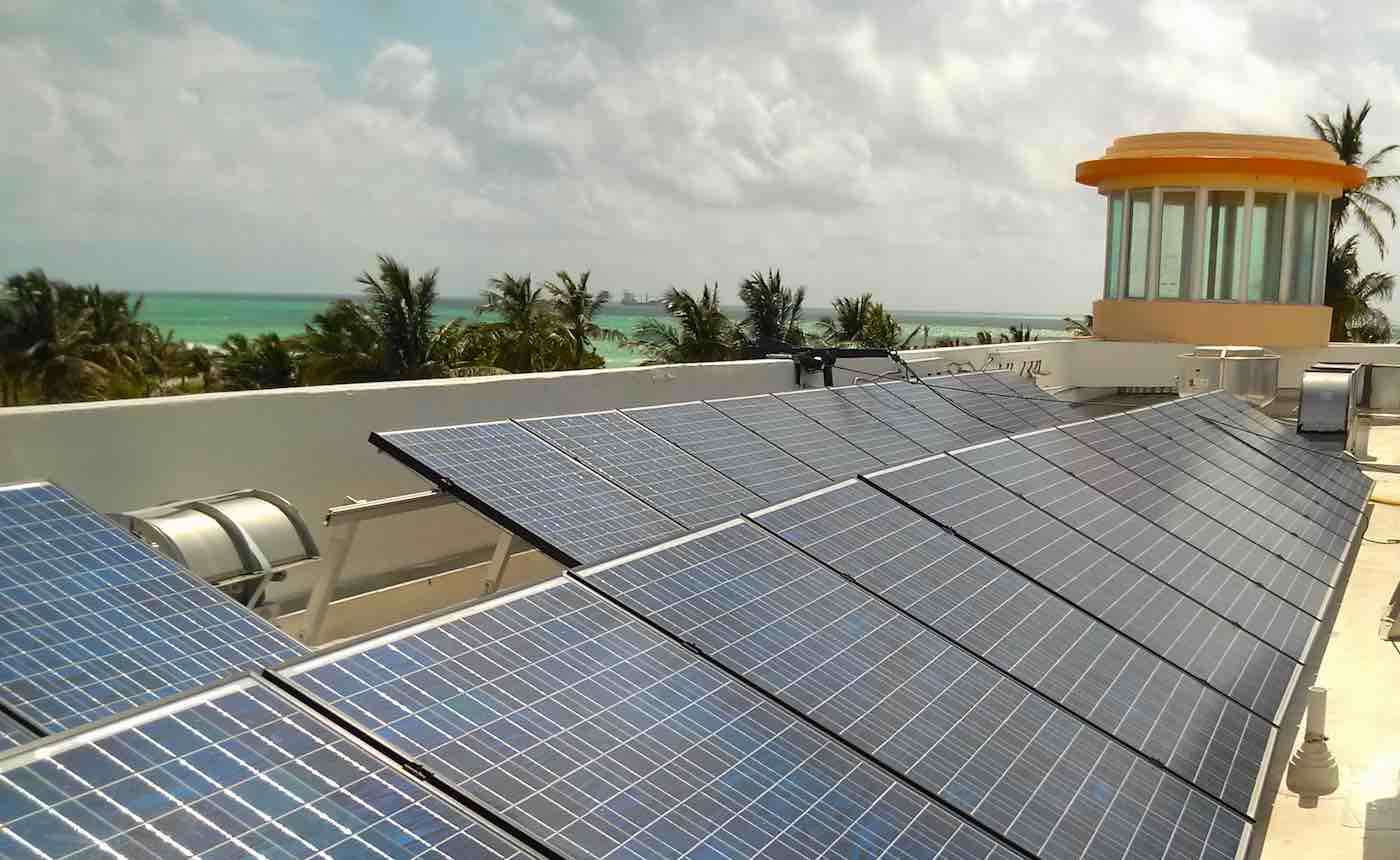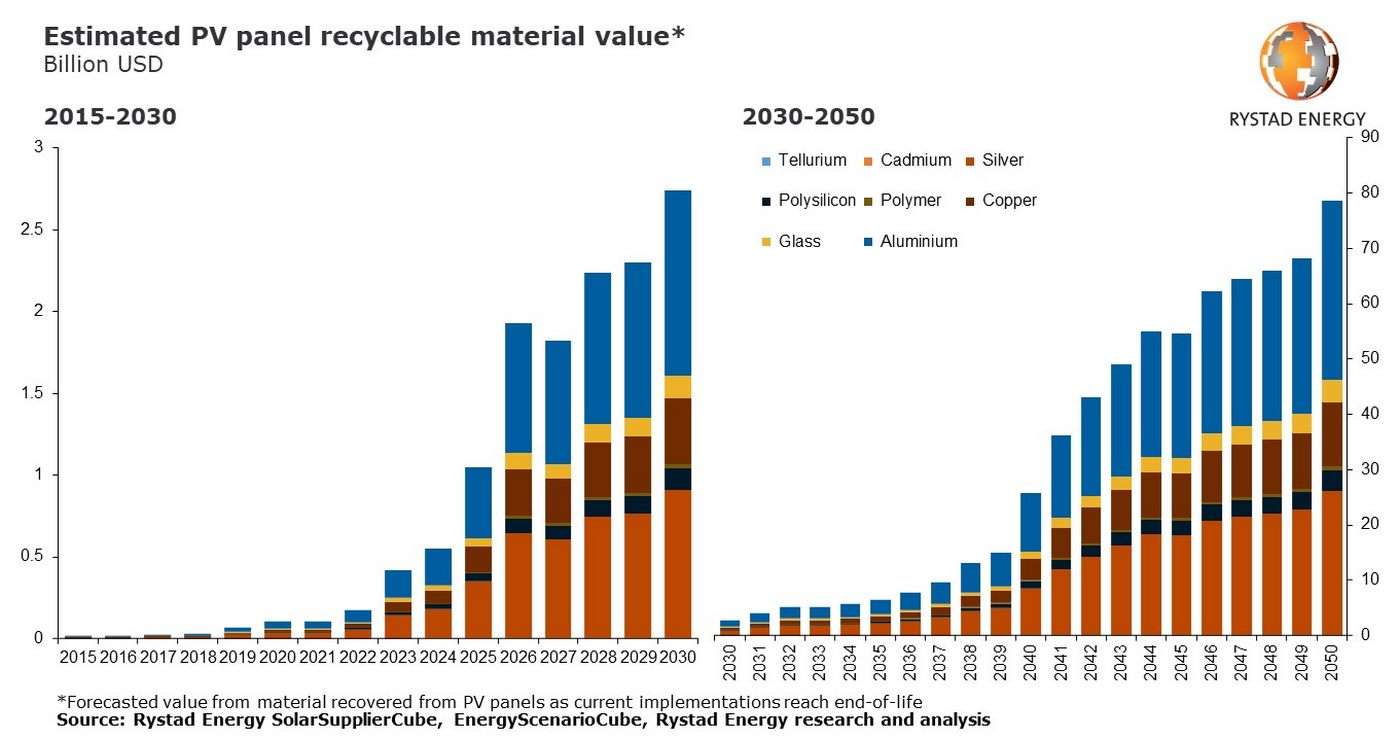From Beer to Biogas: Creating Green Energy Using Brewer's Grain Farm Waste
Pennsylvania farms are partnered with a microbrewery to create an alternative fuel produced with brewer's waste and organic matter.

The demand for recycled solar photovoltaic (PV) panel components is set to skyrocket in the coming years as the number of installations surges and the threat of a supply bottleneck looms.
A Rystad Energy analysis shows recyclable materials from PV panels at the end of their lifespan will be worth more than $2.7 billion in 2030, compared to just $170 million this year.
This trend will only accelerate in the coming decades and the value of recyclable materials is projected to approach $80 billion by 2050.
PV recycling is still in its infancy but is seen as an essential element of the energy transition, with solar PV waste projected to grow to 27 million metric tons per annum by 2040.
Landfills are an easy and cheap option as current resale prices for recycled materials do not compensate for the transportation, sorting and processing costs. Yet, the rapid growth rate of large-scale utility farms within solar energy can change this. A growing demand for minerals is projected, meaning recycling can be a supply relief as panels reach the end-of-life stage.
"Rising energy costs, improved recycling technology, and government regulations may pave the way for a market where more defunct solar panels are sent to recycling rather than the nearest landfill. Recycling PV panels can help operators save costs, overcome supply chain woes and increase the likelihood of countries meeting their solar capacity goals," says Rystad Energy analyst Kristin Stuge.
Demand for the materials and minerals used in solar PV is set to climb with the energy transition, with higher prices a likely result.

By assuming a 15-year lifespan of a PV panel and analyzing installation activity in 2022, Rystad estimates which regions and countries will benefit most from recycling PV materials in 2037. China is set to account for 40% of global installations this year, and when these panels mature in 15 years, the estimated recycling value will be around three-fourths of Asia's total of $4.8 billion, out of a $9.6 billion global total.
Recycled PV materials in North America in 2037 is projected to be worth $1.5 billion, with Europe set to hold $1.4 billion.
The panel components with the highest value are aluminum, silver, copper and polysilicon. Silver accounts for about 0.05% of the total weight but makes up 14% of the material value.
The first step of PV panel recycling is disassembly, where the aluminum frame and junction box are separated from the panel, ground into pieces, and sorted by material. There are PV disassembly machines on the market today, including one by Japan-based NPC, which separates the panel parts even further before grinding the remains, enhancing the recovery rate for materials.
With evolving technology, the market is gradually perceived with greater enthusiasm, and new companies are emerging, such as the US-based start-up SolarCycle, which has generated significant seed funding from investors.
Recycle This Rare-Earth News With Your Friends On Social Media…
Be the first to comment